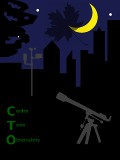Beware of poison ivy! It is present in places along the path. If you don't know what it looks like, have a look on the Internet, before you go!
Mud Lake is located in the Ottawa neighbourhood of Britannia, a peninsula that juts into the Ottawa River. On the Quebec side, a similar formation forces a narrowing
of the river. Presumably an intrusive dike of harder rock, spanning the river, it creates a pinch point; this causes the Deschenes Rapids and creates Lake Deschenes
behind it.
Mud Lake is located within the Britannia Conservation Area and cannot be seen from the NCC multi-use recreational pathway which runs right alongside. The Coservation
Area is fenced in, but there are numerous access apertures, at many points.
We started our tour off at the water plant. Follow the right-hand roadway, and turn right onto the grass just before the chain-link fence. When you reach the shoreline,
turn left. Keep going, as far back and left as the grass will permit, and you should come upon the entranceway to the path, right at the lakeshore. It's not much to look at,
and you may have to hunt a little for it. It's quite muddy at first; fortunately, it was mostly firm, set-up mud. We followed the trail loop counter-clockwise, exiting at
the Southeast corner of the Conservation Area
for a visit to the Pinecrest Creek delta.
We re-entered the area, taking the path to the left, just before the fence. We continued westward; the path eventually curves north.
It bears mentioning that some of the higher ground in this area is not forested as heavily. Coming to a fork in the path, we chose the right-hand route, headed towards a lake
lookout. About halfway to the lookout, we found the 'Glacial Erratic', a large boulder departed by the retreating glaciers some 11,000 years ago. The lake lookout was nice.
We headed back the way we came, and back to the fork. This time we chose to turn right (West). The trail heads that way for a bit, then begins to wind its way South.
You come out at the lake just as the trail heads to the West, crossing a floating bridge over a magnificent cove, with a tree growing in the middle. In the morning sunlight,
it's breaktaking. Further along the south side of the lake, there are numerous little spots where you can look out through the undergrowth and see the lake. Eventually you
reach a cozy little cove at the Southwestern corner of the lake. With its stunted trees and verdant greenery, it reminded me of my home, on Nova Scotia's Eastern Shore.
From there, the trail begins to head North. The vegetation again opens up a bit in this area, the result of microbursts in recent years. And we stumbled upon elderberries
—the first I've seen in this part of the country, in thirty-some years. At a point just north of where Jamieson Street would continue, we found a path to the right.
It's a bit of a zigzag, and there are other intersecting paths; but you come out at a small, wooden lakeside platform. We rested there a few minutes, taking in the scenery.
Upon arriving, I was much concerned about what I took to be a dead baby moose in the water. Tonia was quick to point out that it was a log, upon which two turtles were sunning!
We then proceeded back to the main trail, headed North another couple-hundred metres. There, we found open forest and a lot of undifferentiated glacial till—sand, gravel,
and boulders. We took a path to our left, coming out at Rowatt Street.
This walking adventure is easily accessible by bus; it is currently served by OC Transpo Route #16.
Unforunately for us, that's not what happened. Now, we are both creatures of modern technology; I'm an IT guy, and she's a Recruiter for an IT firm. Naturally, to avoid
unncessary waiting, we try to time our arrival to the bus stop to precede the bus's arrival by a few minutes. We kept watch on the buses, through their GPS feature. Some
minutes late (a common tactic employed by the drivers on weekend mornings), our #11 bus started on its route. We headed down and out the door, and to the stop three blocks
away—only to have it sail merrily by, before we'd even crossed the street! After some complicated math, we concluded that the GPS signals were being received, or relayed to us,
several minutes late. Long story short: next bus.
As we're tooling along, we get to thinking: hey, the next bus we have to catch is the #16, Britannia. We were told to transfer
at Lincoln Fields station, but the routes intercepted earlier. So, we go off the #11 at the Canadian Bank Note Company, and waited for the #16 there; way more pleasant. A few
minutes later (but several minutes earlier than our GPS-based apps were showing), the #16 showed up. We boarded, and rode it to Lincoln Fields. Last Stop! Huh? Okay, we got off.
Next bus headed for Britannia was a half-hour away. We hate to wait; we walk over to the mall, and she orders an Uber. It shows up, picks us up, and away we go. *Phew!*
Coming back, we could have caught a #16 Britannia, which would have dropped us off at the beach for another half-hour wait. Screw it; we Ubered home. Later, we reconstructed
our morning, and realized that every second trip of the #16, in the morning, ends at Lincoln Fields. We also realized, belatedly, that we should have waited at the beach.
Hey—it's a beach!.
